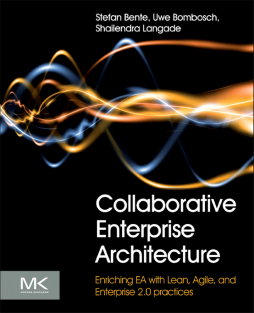
Additional Information
Book Details
Abstract
Ever-changing business needs have prompted large companies to rethink their enterprise IT. Today, businesses must allow interaction with their customers, partners, and employees at more touch points and at a depth never thought previously. At the same time, rapid advances in information technologies, like business digitization, cloud computing, and Web 2.0, demand fundamental changes in the enterprises’ management practices. These changes have a drastic effect not only on IT and business, but also on policies, processes, and people. Many companies therefore embark on enterprise-wide transformation initiatives. The role of Enterprise Architecture (EA) is to architect and supervise this transformational journey. Unfortunately, today’s EA is often a ponderous and detached exercise, with most of the EA initiatives failing to create visible impact. The enterprises need an EA that is agile and responsive to business dynamics. Collaborative Enterprise Architecture provides the innovative solutions today’s enterprises require, informed by real-world experiences and experts’ insights. This book, in its first part, provides a systematic compendium of the current best practices in EA, analyzes current ways of doing EA, and identifies its constraints and shortcomings. In the second part, it leaves the beaten tracks of EA by introducing Lean, Agile, and Enterprise 2.0 concepts to the traditional EA methods. This blended approach to EA focuses on practical aspects, with recommendations derived from real-world experiences. A truly thought provoking and pragmatic guide to manage EA, Collaborative Enterprise Architecture effectively merges the long-term oriented top-down approach with pragmatic bottom-up thinking, and that way offers real solutions to businesses undergoing enterprise-wide change.
- Covers the latest emerging technologies affecting business practice, including digitization, cloud computing, agile software development, and Web 2.0
- Focuses on the practical implementation of EAM rather than theory, with recommendations based on real-world case studies
- Addresses changing business demands and practices, including Enterprise 2.0, open source, global sourcing, and more
- Takes an innovative approach to EAM, merging standard top-down and pragmatic, bottom-up strategies, offering real solutions to businesses undergoing enterprise-wide changes
"I recommend this book to those readers looking to enhance their existing understanding of collaborative enterprise architecture, and those interested in the benefits of incorporating lean, agile and enterprise 2.0 methods into their practice. I applaud the authors for illustrating their arguments throughout the book with a fictional company and situation to help translate theory into practical use."--ComputingReviews.com, April 11, 2013 "Bente, Bombosch, and Langade have extensive experience in the information technology field…their collective wealth of knowledge based on real-world practices has allowed them to recognize that the collaboration of all stakeholders is a major key to obtaining effective and efficient EA…intended for those with several years of experience in the information technology field."--CHOICE, May 2013 "Collaborative Enterprise Architecture breathes some new thought into a still emerging field… if you are a practicing enterprise architect whose focus is improving your IT organization by working to better align it with the business and to improve its overall effectiveness, then you should read this book."--Software Engineering news, March 2013 "This work for IT practitioners and managers uses a conversational style and a sense of humor as it penetrates the shroud of mystery surrounding enterprise architecture (EA)."--Reference and Research Book News, December 2012 "The value of this book is not only a new look at the use of EA, but many valuable examples referring to practices that will help in everyday’s work of architects. Extensive introduction into the EA domain also allows beginners to familiarize with the subject of EA, while the proposed set of tools helps to organize analytical work."--IEEE Communications Magazine, October 2013
